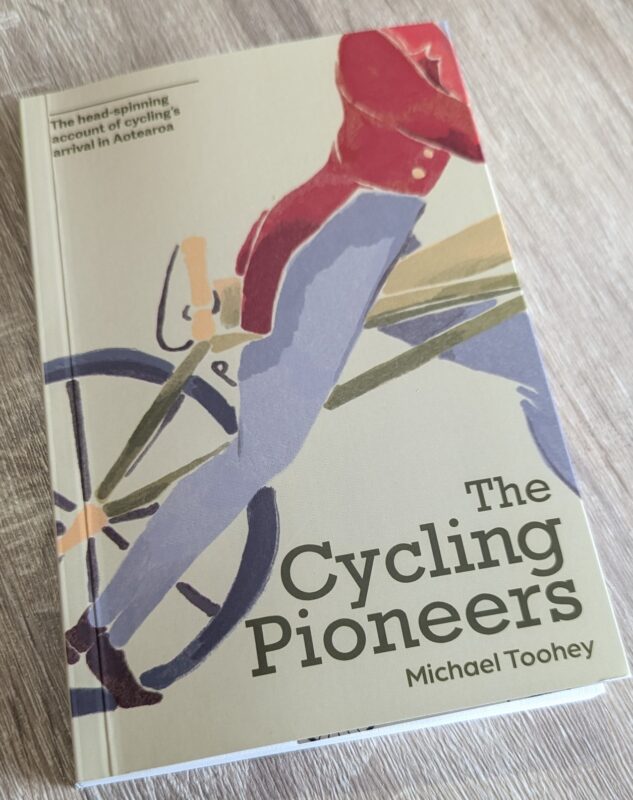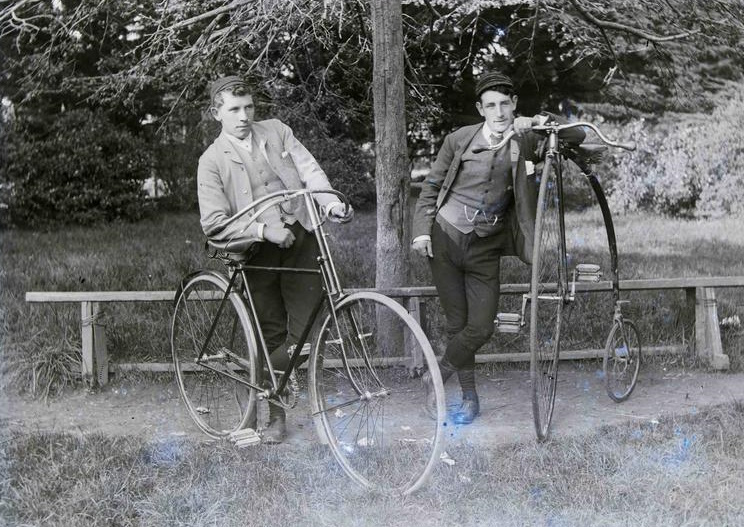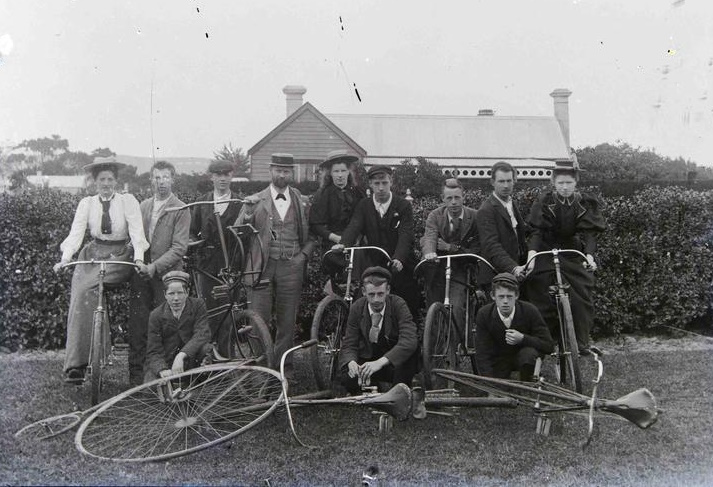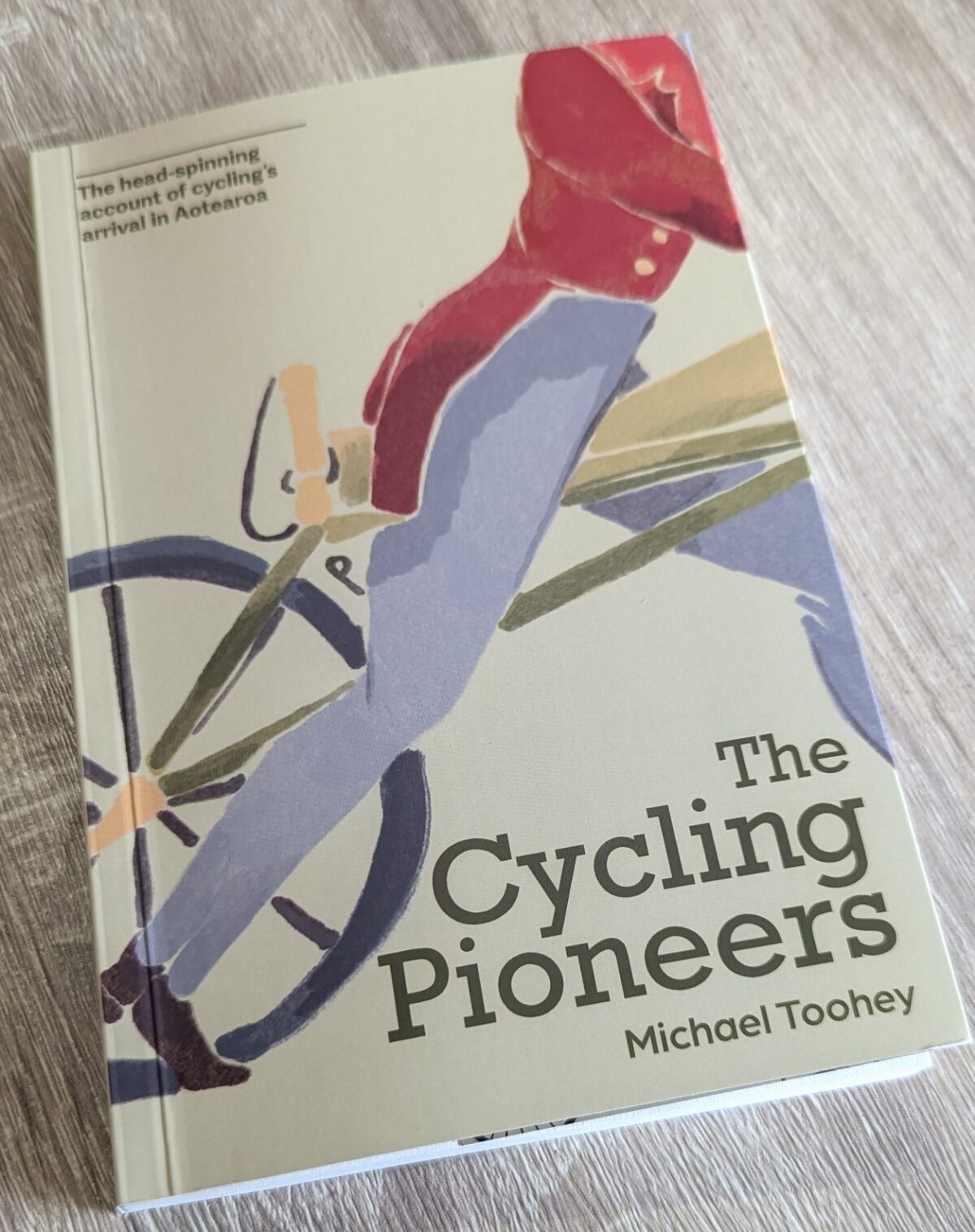 The Cycling Pioneers
The Cycling Pioneers
by Michael Toohey
138pp.
Kennett Brothers: $25
(Book or PDF versions)
While cycling history may often seem like the realm of other parts of the world, New Zealand was a surprisingly early adopter in trying out the new-fangled “velocipedes” in the 19th century. In this latest offering from the Kennett Brothers, cycle historian Michael Toohey (based in New Brighton) sets out to summarise the intrigue and adventure associated with the many colonial NZers taking up cycling in its infancy.
In a relatively easy-to-read publication, Toohey takes us from the first concept of a two-wheeled “running machine” in 1815 Germany to the first arrival of similar cycles to NZ in the 1860s. From there, we read about the growing production of such devices and ride-touring tests in the 1870s, to the formation of numerous cycling clubs with organised races during the 1880s (Christchurch being one of the lead localities for the growth in this pastime), and the widespread acceptance of cycling by many in the 1890s.

For all the supposed controversies that we hear about cyclists and cycleways in modern days, it is somewhat comforting to know that even back in 1870, local newspapers were bemoaning their nuisance value and insisting that “the proper authorities should take some steps to moderate the present mania for velocipedalism.” Of course, many people just ignored the concerns and kept on looking for ways to encourage their wider use.
The design of bicycles (and tricycles) evolved quite rapidly during the 19th century and Toohey goes into quite a bit of detail about the incremental improvements made to address issues of stability, comfort, speed, and safety – for those who were involved in using cycles for racing or touring, this was an important way to get a competitive edge. While many of the initial designs were based around the large front-wheeled “ordinary” (or “penny-farthing”) style of bike, by the end of the 19th century, the so-called “safety cycle” (essentially the same model we see in common use today) had demonstrated its design advantages.

There were also quite a lot of machinations and politics associated with the formation of local cycling clubs across New Zealand, including their challenges with sustainable funding and the tricky division between “amateur” vs “professional” status. From initially largely being men-only clubs, with all the blokishness that goes with that, Toohey discusses the gradual take-up by women of cycling (especially on bikes without a top bar) and their growing involvement in cycling clubs as well.

The other numerous challenges of early cycling in NZ also get discussed. For example, the inconsistent riding surfaces of 19th century roads made races (long and short) quite difficult, and sometimes a bit dangerous, and it was quite some time before better dedicated riding tracks became more common around the country. There was also a fair amount of competition between the various cycle-making firms and their respective claims to being the best or first at various new models being developed.
All up, Toohey has gathered together a treasure trove of historical snippets and details to bring us a fascinating insight into the heady days of early cycling in this country. The chapters will fly by as you learn about the many enterprising people who made it their mission to bring cycling to the masses in New Zealand.
To celebrate the publication of this new book, a book launch is being held next Mon 4th Nov, 5.30-7.30pm at the TSB Space in Tūranga (Level 1). While there, you’ll also get the chance to view some wonderful hand-built bicycles, including one of the classic models featured in Michael’s book.
Have you read this book? What did you think?


1 thought on “Book Review (and a Launch): The Cycling Pioneers”